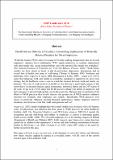| dc.description.abstract | "Work-life balance (WLB) refers to a range of flexible working arrangements that go beyond employees' statutory leave entitlements. WLB assists employees to combine employment with their family life, caring responsibilities and with personal life outside the workplace" (The National Framework Committee for Work-Life Balance Policies, 2010). Work-family conflict has been shown to result in job dissatisfaction, depression, absenteeism and an overall loss of health and sense of well-being (Thomas & Ganster, 1995; Poelmans and Sahibzada, 2004, Lapierre & Allen, 2006, Beauregard & Lesley 2009). Avgar et al. (2010) states that balancing work and family is considered important to employees in most work settings, but the healthcare arena is one in which the tensions between work and family are dramatic. The type of work involved in health service delivery is particularly unique to this sector due to its intensive human capital dependency, emotional labour and the 24/7 nature of the work. Avgar et al. (2010) argue that WLB practices enhance the ability of employees and their managers to provide high quality care to their patients. Through their examination of the effects of WLB practices their results indicate that greater use of WLB practices enhances outcomes for hospitals, their employees and patients. Specifically, WLB practices were shown to positively influence hospital financial performance, reduce employee turnover intentions, and decrease errors that could harm patients and staff.
Avgar et al. (2010) further highlight that while many studies have looked at work-life balance issues for physicians, less attention has been given to WLB practices for other healthcare frontline staff. The Integrated Employee and Well-being strategy 2009-2014 signals the recognition that the well-being and welfare of employees is central to delivering quality health services (HSE: 2009). 35% of health employees are in the nursing category in Ireland (Department of Health and Children 2009). Little research, apart from a few studies has been carried out in relation to the experiences of nurses and their working environment in Ireland. Studies by McCarthy et al., 2006, Drennan et al. 2007, Curtis 2007 allude to the need for further research in this area.
This paper will seek to give an overview of the literature on work-life balance and illustrate how future research applied to nursing in a hospital context will fill some of the current research gaps in this academic field. | en_US |


